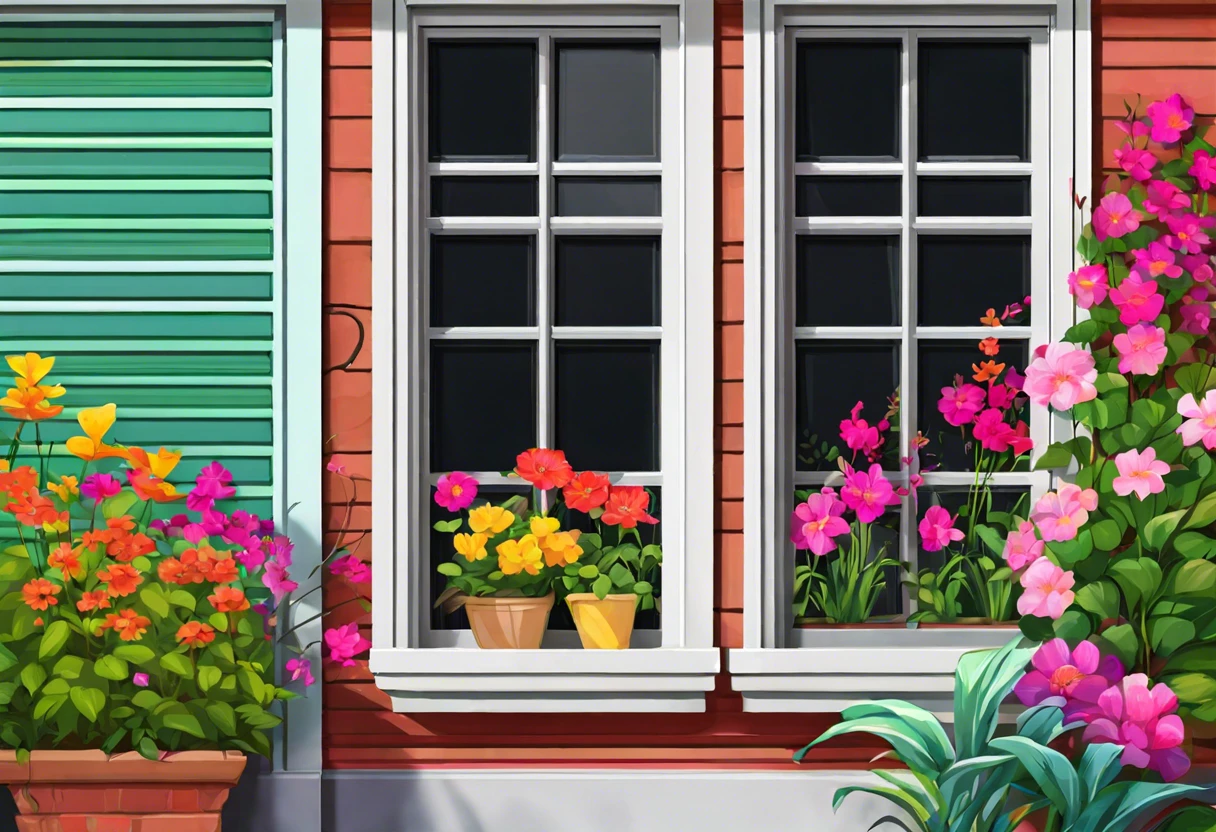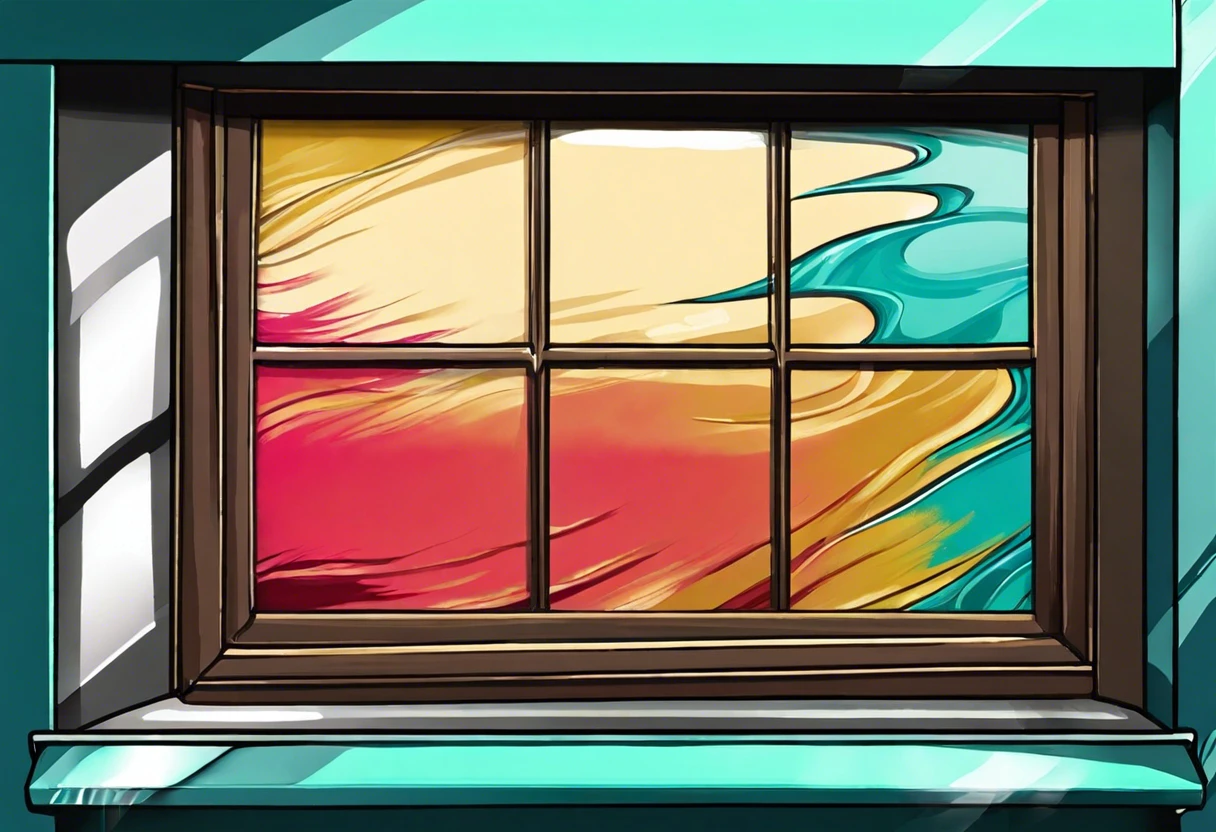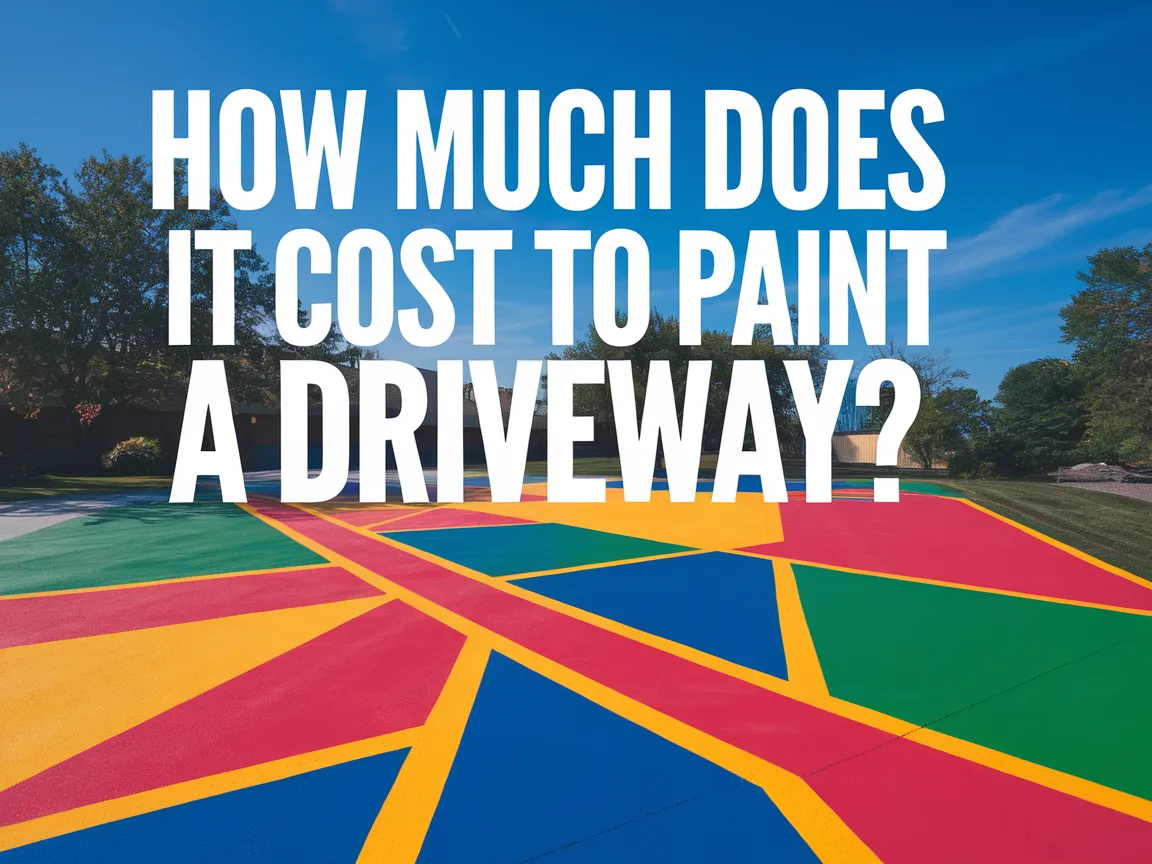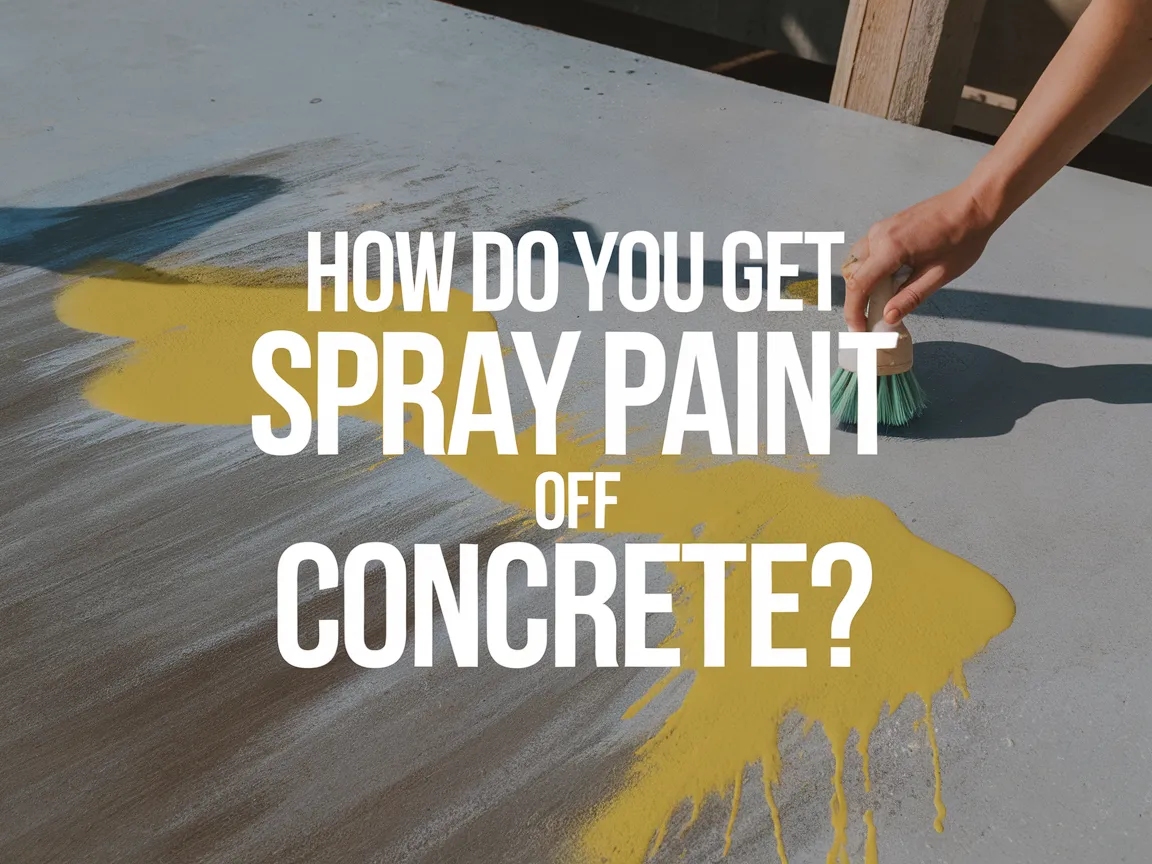Can Vinyl Windows Be Painted?
Published on: October 2, 2025 | Last Updated: October 19, 2025
Written By: Alisha Winters
Vinyl windows are like magic glasses for your house. They’re made of a special plastic called vinyl that keeps out the cold and helps save energy.
So, can vinyl windows be painted? It’s important to explore this because it can change the look of your home and its value. I once decided to paint my old vinyl, thinking it’d freshen things up, and the results were beyond my expectations.
In this article, we’ll explore what vinyl windows are, what you need to think about before painting, steps for painting successfully, compatible colors, different types of windows and paint compatibility, factors that might affect your success, common issues you may face, finishing touches after painting, and some fun DIY project ideas. Plus, we’ll tackle frequently asked questions about can vinyl windows be painted and other related topics like how to paint shiplap.
Contents
- 1 Can Vinyl Windows Be Painted?
- 2 What Are Vinyl Windows?
- 3 What to Consider Before You Start Painting Vinyl Windows
- 4 Steps to Successfully Paint Vinyl Windows
- 5 Recommended Color Palette for Painting Vinyl Windows
- 6 Types Of Vinyl Windows and Their Compatibility With Paint
- 7 Factors Affecting the Success Of Painting Vinyl Windows
- 8 Common Issues When Painting Vinyl Windows
- 9 Durability of Painted Vinyl Windows
- 10 Cost-Effectiveness of Painting Vinyl Windows
- 11 Comparing Costs: Painting vs. Replacing Vinyl Windows
- 12 Finishing Touches After Painting Vinyl Windows
- 13 Frequently Asked Questions About Painting Vinyl Windows
- 14 Conclusion
- 15 Useful Resources
Can Vinyl Windows Be Painted?
Yes, you can paint vinyl windows. Use a high-quality exterior paint designed for plastic surfaces. Proper surface prep is crucial—clean and lightly sand to help the paint adhere. Avoid dark colors that can warp the vinyl. If you’re wondering about painting techniques for different surfaces, painting material guidelines matter significantly.
The Finishing Touch
A freshly painted wall is a blank canvas. The best way to bring your room to life is with a single piece of statement art that ties everything together.
Browse Wall Art at Big Wall DecorWhat Are Vinyl Windows?
Vinyl windows are made from polyvinyl chloride (PVC). They’re energy-efficient, durable, and low-maintenance compared to traditional wood or aluminum windows.
Can vinyl windows be painted? Some homeowners consider painting to change their window aesthetics and achieve the perfect color match.
I’ve heard from friends who customized their homes by painting their vinyl windows. While many discuss whether vinyl windows can be painted, those who’ve done it often mention flexibility, similar to painting shiplap, since it allows seamless style changes without a hefty price tag. When selecting the right primer for your painting project, you might want to explore professional primer selection techniques.
What to Consider Before You Start Painting Vinyl Windows
What do you need to get started?
- Vinyl-safe paint: Choose a product like Sherwin-Williams SuperPaint. It’s specifically formulated for vinyl to prevent bubbling or warping at temperatures above 80°F (27°C).
- Surface cleaner: Use Simple Green All-Pro Cleaner to prepare the surface. A clean surface ensures proper paint adhesion, extending the paint’s lifespan.
- Brushes and rollers: Get a high-density foam roller, such as the Wooster Pro, for smooth finishes. Brushes help reach grooves and corners effectively.
- Drop cloths: Use 9 x 12 ft (2.74 M X 3.66 M) cloths to protect your surroundings. Painting windows can be messy without proper covering.
That covers key considerations for painting vinyl windows. Let’s now take a look at the steps for successful painting.
Also See: Can You Paint Green Treated Lumber? Tips and Tricks!

Steps to Successfully Paint Vinyl Windows
Here are the steps to effectively paint vinyl windows for a fresh look.
The Finishing Touch
A freshly painted wall is a blank canvas. The best way to bring your room to life is with a single piece of statement art that ties everything together.
Browse Wall Art at Big Wall Decor-
Clean the Vinyl Windows Thoroughly
Start by scrubbing the vinyl surfaces with soap and water to remove dirt. A clean surface ensures better paint adhesion.
Use a soft brush for crevices. Rinse thoroughly with a hose (Or Bucket) to remove any residue, then allow drying for about 2-3 hours.
-
Lightly Sand the Vinyl Surface
Use fine-grit sandpaper (Around 220 Grit) to gently scuff the surface. This helps create a better bond for the primer and paint.
Focus on areas that have been painted or show wear. Sanding too hard can damage the vinyl; just dull the shine without removing material.
-
Select and Apply a High-quality Primer
Use a primer designed for plastics to enhance adhesion. I once used an ordinary primer, and it didn’t stick well.
A good primer dries evenly in about 1-2 hours. Follow the manufacturer’s instructions for proper application and drying guidelines.
-
Choose the Best Paint for Vinyl
Select paint formulated for vinyl; stretchable paints perform best. Quality paint lasts longer and withstands the elements—look for options labeled as such!
Acrylic latex paint is often the best choice, but oil-based paints can work as well; just be mindful of drying times.
-
Apply the Paint With Precision
Use a spray gun or a brush for application. If using a brush, apply long strokes and avoid heavy layering. Multiple thin coats (At Least Two) yield the best results.
Let each coat dry as recommended (Typically 3-4 Hours). Avoid direct sunlight; it can cause the paint to dry too quickly and crack.
We have now covered the steps to successfully paint vinyl windows. Next, we will explore the recommended color palette for painting them.
Recommended Color Palette for Painting Vinyl Windows
I recommend a coastal theme using soft blues and whites because it brings serenity and refreshes your space.
| Color Box | Hex Code | Color Name |
|---|---|---|
| #A2C8E0 | Sky Blue | |
| #FFFFFF | Bright White | |
| #F5E6C7 | Seashell Beige |
We have now covered the suggested color schemes for painting vinyl windows. The next section discusses the different types of vinyl windows and their paint compatibility.
Types Of Vinyl Windows and Their Compatibility With Paint
Let’s explore the various types of vinyl windows: casement, double-hung, sliding, and picture windows.
-
Casement Windows
Casement windows crank open outward, allowing for maximum ventilation. Painting these windows can be tricky due to their hinges and moving parts, but it’s possible with adequate prep work.
-
Double-hung Windows
Double-hung windows have two sashes that slide up and down. They’re the most popular residential style and suitable for paint. Be sure to use paint formulated for plastic surfaces.
-
Sliding Windows
Sliding windows open horizontally, making them great for smaller spaces. You can paint them, but use specialized paint to withstand movement without chipping.
-
Picture Windows
Picture windows provide a clear, unobstructed view. They’re mostly stationary and can be painted; just ensure the paint adheres well to avoid peeling.
Through trial and error, I’ve found that double-hung windows are my favorite to paint. The easy access to both sashes and the wide range of colors really lets my creativity shine!
That covers various types of vinyl windows and their paint compatibility. Let’s now take a look at factors influencing successful painting.

Factors Affecting the Success Of Painting Vinyl Windows
What factors influence the successful painting of vinyl windows?
-
Temperature: Painting in extreme conditions, below 50°F (10°C) or above 90°F (32°C), can lead to poor adhesion.
-
Surface Preparation: A dirty or improperly cleaned surface prevents bond, causing the paint to peel.
-
Paint Type: Using the wrong paint, such as latex instead of acrylic, can drastically affect durability.
-
Application Method: Applying paint with rollers or brushes instead of spray can create uneven finishes.
Common Issues When Painting Vinyl Windows
My friend once painted his vinyl windows, but they bubbled. He didn’t prep properly and missed cleaning the surface with a vinyl-safe cleaner first.
Use acrylic latex paint to fix this. Apply two coats for durability. Ensure the temperature is between 10°C and 30°C (50°F and 86°F) during application for smooth results!
Durability of Painted Vinyl Windows
Understanding how painted vinyl windows hold up is key for your project.
-
Expected Lifespan
Paint on vinyl windows can last about 3 to 5 years with proper care and maintenance. Seasoned painters often suggest regular checks to maintain color vibrancy.
-
Weather Resistance
Quality vinyl paint is UV resistant and can withstand rain, snow, and extreme temperatures. Choosing top-rated brands can significantly improve durability.
-
Maintaining Appearance
Give the painted surface a gentle wash twice a year. This keeps dirt from building up and ensures the colors stay bright.
Cost-Effectiveness of Painting Vinyl Windows
Painting might just be an affordable upgrade for your home. Let’s break it down.
The Finishing Touch
A freshly painted wall is a blank canvas. The best way to bring your room to life is with a single piece of statement art that ties everything together.
Browse Wall Art at Big Wall Decor| Cost Element | Price Range (USD) | Details |
|---|---|---|
| Paint | $30 – $50 | High-quality vinyl-safe paint. |
| Primer | $15 – $25 | A good primer is essential for adhesion. |
| Tools | $20 – $40 | Brushes, rollers, and drop cloths. |
| Total Estimated Cost | $65 – $115 | For painting several windows, this is a cost-effective option! |
Comparing Costs: Painting vs. Replacing Vinyl Windows
Let’s dive into whether it’s better to paint or replace your vinyl windows.
| Option | Estimated Cost (USD) | Projected Lifespan |
|---|---|---|
| Painting | $65 – $115 (for several windows) | 3 – 5 years |
| Replacing | $300 – $700 (per window) | 20 – 30 years |
As you can see, painting is budget-friendly, but it’s wise to consider your long-term goals. Replacing windows is a higher upfront cost, yet it offers greater endurance over time.
Finishing Touches After Painting Vinyl Windows
After you’ve transformed your vinyl windows, wait at least 7 days for curing. Apply a UV protectant every six months to prevent fading and enhance durability.
Inspect joints and seals for gaps. Using a moisture meter, ensure moisture levels don’t exceed 15%. Check hinges and handles for smooth operation, and tighten any loose screws.
I recommend using rust-inhibiting spray like Rust-Oleum for hardware protection. This adds longevity and resists harsh weather without breaking the budget.
For advanced care, choose a nano-ceramic coating like Tuff Stuff; it provides permanent protection after just one coat. Keep the thickness between 25 to 50 micrometers (1 to 2 Mils) for optimal performance. If you’re looking to enhance your coating’s aesthetic appeal, you might want to explore creative paint customization techniques.
Frequently Asked Questions About Painting Vinyl Windows
Now let us look at the questions I typically get asked.
Can Any Paint Be Used on Vinyl Windows?
No, not any paint can be used on vinyl windows. You’ll need paint specifically designed for vinyl surfaces, usually flexible and UV resistant, to ensure it bonds well and lasts long. Standard paints can crack or peel, which means additional costs in the future. When storing your specialized vinyl paint, it’s crucial to maintain proper temperature conditions to preserve its quality and protect paint storage integrity.
What Preparation is Needed Before Painting Vinyl Windows?
You must prepare the vinyl window surface before painting it. Start by cleaning the vinyl with a mild detergent and water to remove dirt and grease, which helps the paint stick better. This step is vital for a smooth, durable finish. When tackling exterior painting projects, temperature plays a crucial role in achieving optimal results, so check the recommended painting temperature guidelines.
How Long Does the Paint Last on Vinyl Windows?
The paint can last anywhere from 3 to 5 years on vinyl windows. The lifespan depends on factors like UV exposure and weather conditions. Choosing high-quality vinyl-specific paint can maximize durability and keep your windows looking fresh for longer. If you’re considering painting over existing black paint, proper surface preparation is crucial for achieving optimal results.
Is It Necessary to Use a Primer When Painting Vinyl Windows?
Yes, it’s necessary to use primer when painting vinyl windows. A proper primer helps the paint adhere to the surface and reduces the risk of peeling. If you skip this step, the paint might wear off quicker, leading to more frequent touch-ups. When working with different surfaces, it’s crucial to know which solvents can safely clean without damaging paint.
Can Vinyl Windows Be Painted Over Existing Paint?
Yes, vinyl windows can be painted over existing paint, but ensure the current paint is in good condition. Remove any flaky paint and smooth the surface to enhance adhesion. This step is crucial; otherwise, you risk losing the entire paint job. If you want to explore specific techniques for painting bathroom surfaces, painting techniques matter significantly.
Conclusion
Thank you for joining us! We’ve explored vinyl window painting techniques, important pre-painting considerations, the painting process itself, ideal color choices, the compatibility of various vinyl systems, factors affecting your results, common painting challenges, finishing details, DIY inspiration, and answers to frequently asked questions.
So, can vinyl windows be painted? Absolutely! With the right preparation and using high-quality paints such as acrylic or urethane, along with a primer, you can achieve stunning results. Just remember that proper application and regular maintenance will extend the life and appearance of your painted windows.
If you’re looking for more tips and tricks, be sure to visit Paint Answers for additional resources.
Useful Resources
- Loomis, A. (2011). Figure Drawing for All It’s Worth. New York, NY: Titan Books.
- Can I paint my vinyl windows to match my home’s exterior? – The Washington Post
- Can I paint my white vinyl windows? – DoItYourself.com Community Forums
Experienced interior designer with 15+ years in transforming spaces, blending artistry with expertise in color and design. Rhode Island School of Design graduate, specializing in restorations and modern makeovers.
Material, Vinyl









